29/4/13
Uniones interesantes.

Nicola Zocca's brilliant heat-shrink joinery was one of our favorites from the Design Products section of the Royal College of Art final show, which opened last night in London (a must-see). The series is appropriately titled "Shrink." The idea is wonderfully simple, and the execution precise and imaginative. Nicola describes it best: "So, just using hot air, it's possible to build and fix chairs, bookshelves and tables."

Of course it's not so simple: serious thought has gone into the forces at play in the furniture, with stainless steel surfaces bent to meet exactly milled notches in the wood, providing the necessary forces to stabilize the colorful joints. Below, see a few tests from Nicola's process, on display at the RCA exhibit.


Lots more great work at the RCA Show 2. Go see it at the Kensington campus through July 4th, 2010.
More shots after the jump.








25/4/13
diseñar juguetes.

Of all the different types of industrial designers we cover, it's exhibit designers and toy designers that get the shortest shrift; there simply aren't many of you lot giving out interviews. But now Lenny Panzica, a Hasbro product designer has stepped up for a Gizmodo interviewexplaining the design process behind the latest Transformers toy. (Panzica, by the way, is a natural fit to design the dragon-inspired "Predaking" robot; the dinosaur enthusiast has degrees in both archaeology and toy design.)
You'd think something as sophisticated as a transforming robot would be worked out almost exclusivly in CAD, so I was surprised to see how much of it is done on good ol' pen and paper:
Algo mas de esto...
juguetes.,
proceso creativo
Reinventar la rueda.

Six years ago, industrial designer Sam Pearce was sitting in an airport when "I saw a mother pushing her child in a buggy," he writes. "The front wheel hit a slight kerb [sic] and the child jolted forward because of the impact. It happened several times in the time I was waiting there." He then did what many ID'ers do, which is to find the nearest piece of paper and sketch out a potential solution. What he drew in his notebook was this:

A simple idea for a wheel with built-in suspension.
Two years later, while off-road cycling, he remembered the sketch and began thinking if a suspension system like that could be built into a bike wheel. Now, many years of tinkering later, what Pearce has come up with is this:

It's called the Loopwheel, and its system of "tangential suspension"—essentially leaf springs folded back in on themselves—are not only workable, but they provide a gentler ride over sharp obstacles due to physics:

For now, Pearce is focusing on developing Loopwheels for smaller bikes, because the design "[allows] suspension where suspension can't normally fit," as with a folding bike design.

Last month Pearce debuted his creation at the UK's Bespoked Bicycle show. Response was tremendous, and he's now seeking Kickstarter funding to get the Loopwheel into proper production; up until now he's been making them as one-offs in his shop.
One of the cool things about Pearce's Kickstarter video is that he not only shows you the Loopwheel, but also shows the simple machines he's rigged up to test them out:


And here's the vid:
Pearce has nearly reached his funding goal—at press time he was just £4,000 shy of the £40,000 target—but interested pledgers still have until May 15th to buy in.
Algo mas de esto...
bicicletas,
ruedas
24/4/13
Cuchillos de madera
Prototype. Sourcing Manufacturing.






22/4/13
Increíbles uniones diseñadas al dedillo.
designer yuya ushida has developed 'XXXX_' a transformable furniture system made of four components in different lengths,
rings and joints. when put together, the assembly becomes more than just the sum of parts. in a synergetic manner, the furniture
expands and contracts as needed. sofas, stools, tables and benches can be created from the eight different elements within
the building kit--this modular system offering endless furniture possibilities.
rings and joints. when put together, the assembly becomes more than just the sum of parts. in a synergetic manner, the furniture
expands and contracts as needed. sofas, stools, tables and benches can be created from the eight different elements within
the building kit--this modular system offering endless furniture possibilities.
editor's note: designboom been following the development of the 'XXXX_' furniture series since 2011 when it was first conceived as a sofa.
see the first iterations and development process of the seating concept here.
see the first iterations and development process of the seating concept here.
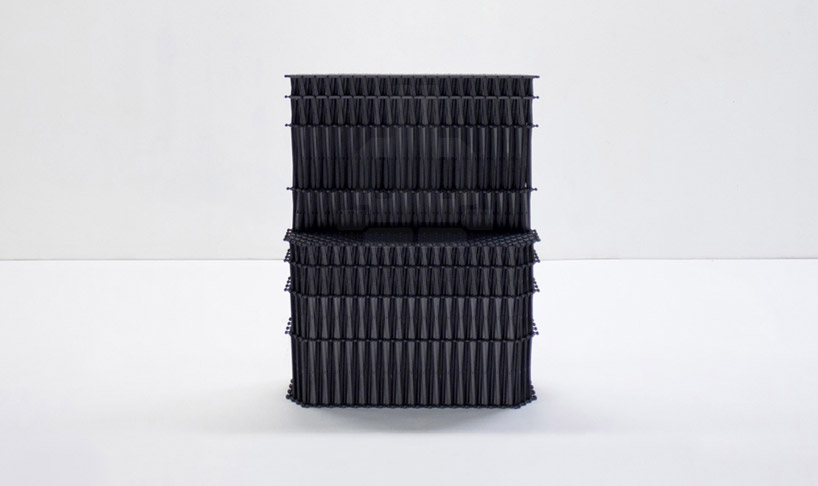
XXXX_sofa chair
building up an 'XXXX_' piece of furniture
video courtesy of yuya ushida
video courtesy of yuya ushida
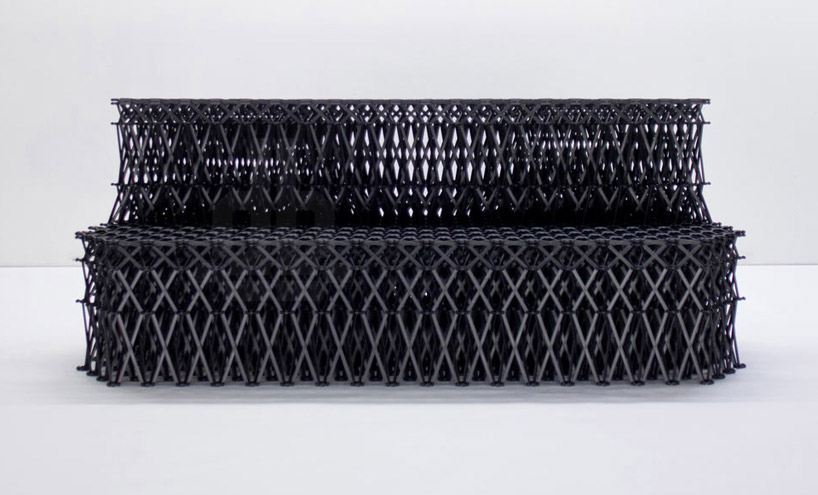
XXXX_sofa
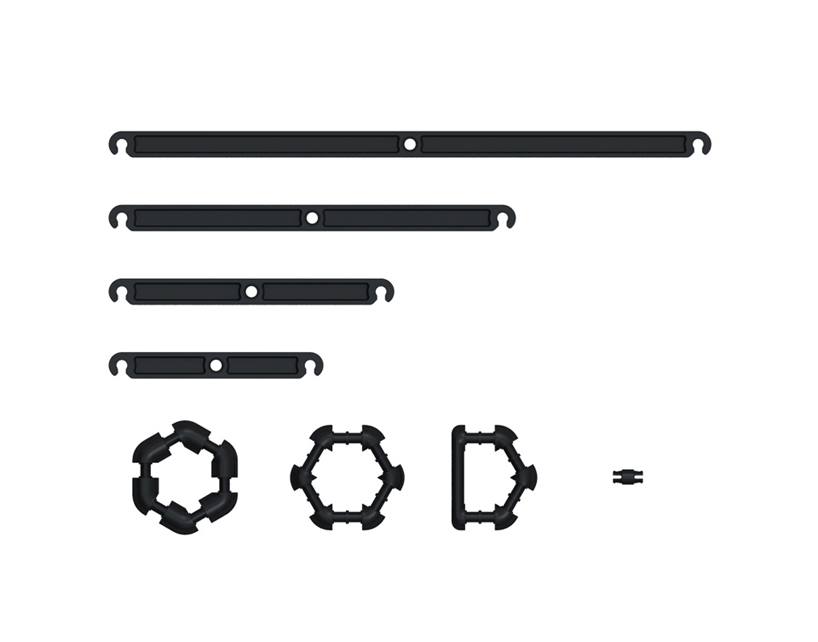
eight elements for construction
playing with 'XXXX_' components
playing with XXXX_
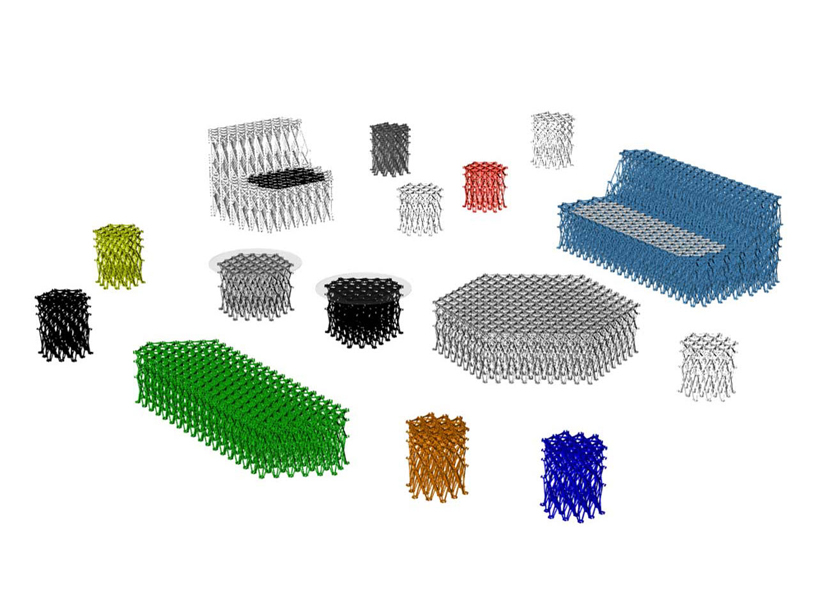
variations
design of the year 2012
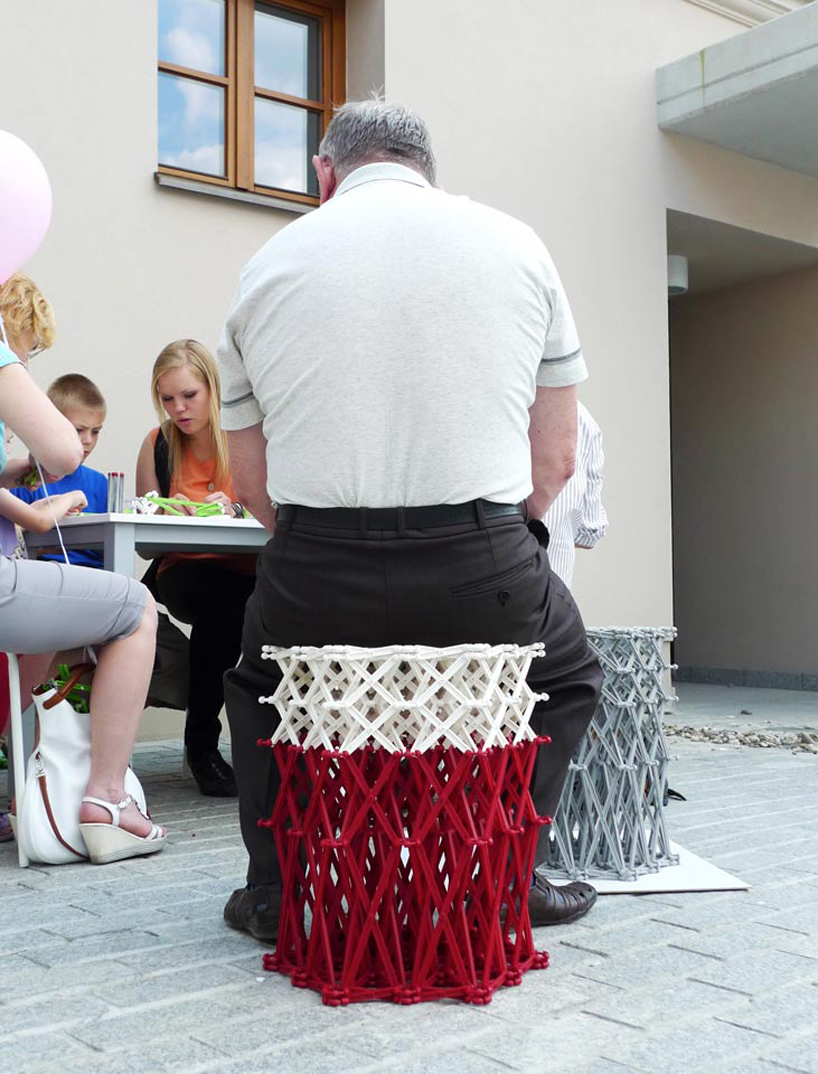
XXXX_ with man
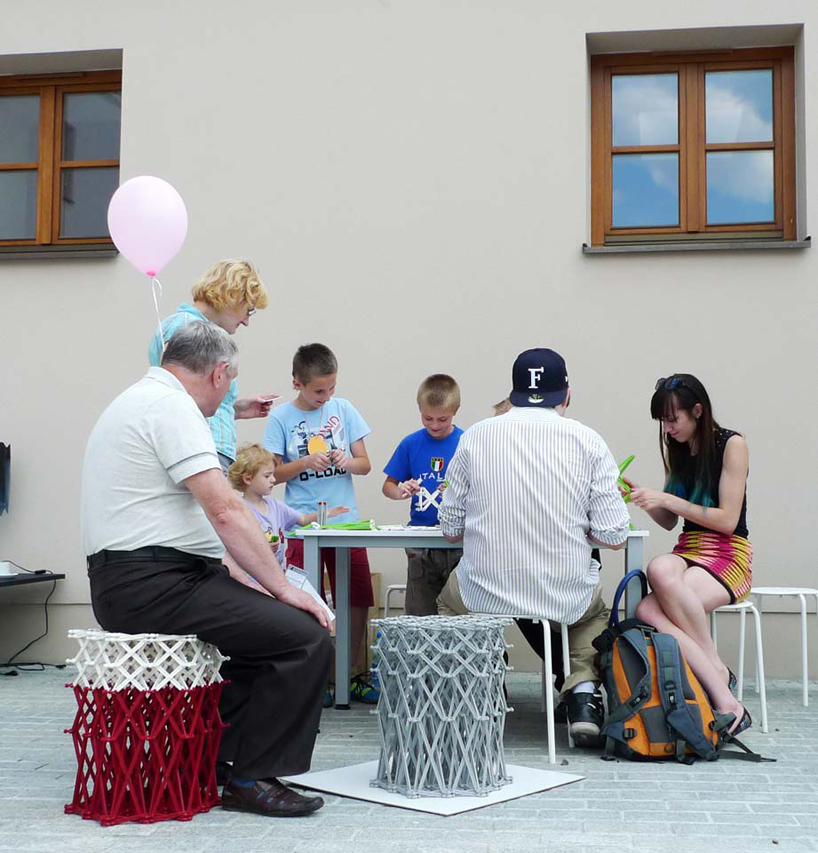
the 'XXXX_stool' in context--easily transportable for use in all social situations
Alerta de pinchazos.
Flat Tire Prediction
Wouldn’t it be a boon if you had a system that told you about your upcoming flat tire? I’m not talking about some random card-pulling session but a proper system like the Flat Tire Warning Light. The device combines a Tire Pressure Sensor, LED Technology and Vibration Generation Chip to tell you in advance that a flat tire is coming your way. Get ready!
Designers: Hsiang-Han Hsu, Tzu-I Wen, Jhih-Jie Wang & Yih-Wenn Luo
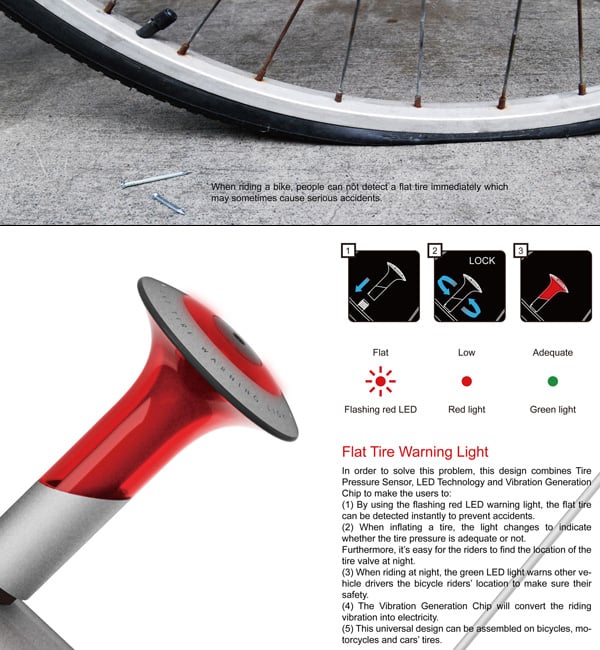


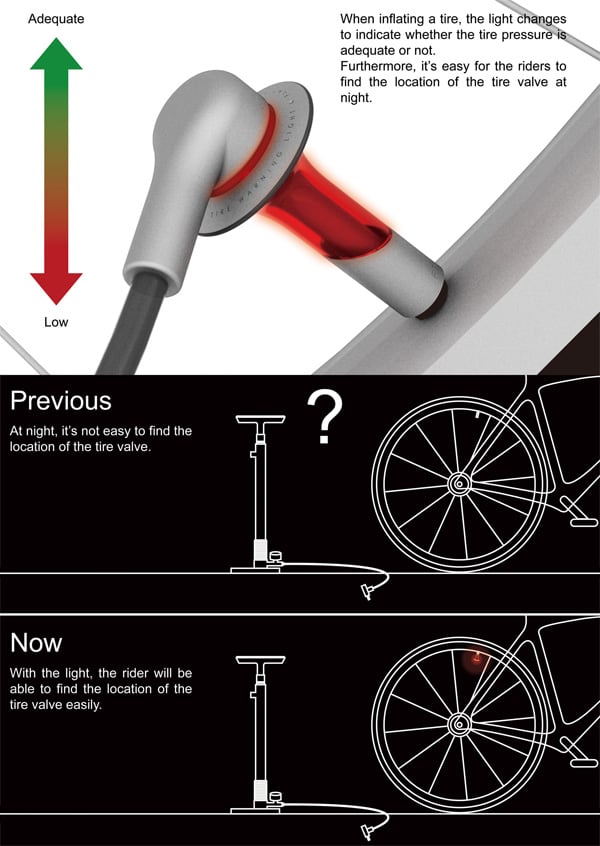

Read more at http://www.yankodesign.com/2013/04/12/flat-tire-prediction/#HhsOfyseKIbdgysb.99
21/4/13
Fabricación de Matafuegos
EN WIKIPEDIA
Característica de fabricaciónEl recipiente del extintor debe ser realizado en chapa de hierro Nº 16 o sea de 1,59 mm, de espesor soldado a la autógena en sus costados longitudinales y uniones de la cúpula y del fondo. Debe ser probado a presión hidráulica, operación fundamental ya que en su funcionamiento se originan presiones interiores. De no contar con esta prueba podría darse el caso, ya experimentado, de reventar en su parte más débil, soldadura o picaduras de la chapa, con las lamentables consecuencias previsibles para el operador o asistente. Por ello debe comprobarse que cada matafuego posea la garantía del fabricante, de haber realizado la prueba hidráulica.La prueba hidráulica de este tipo de extintores debe repetirse cada cinco años. Para ellos es menester contar con una bomba de potencia suficiente para desarrollar una presión interior de 24 atm. durante 5 minutos. Los extintores con ruedas o de mayor capacidad deben ser llevados a una presión interior de 27,5 kilogramos por centímetro cuadrado.Los extintores de soda-ácido responden a las normas IRAM, sigla del Instituto Racionalizador Argentino de Materiales, que son observadas por casi todas las reparticiones nacionales, provinciales y muchos usuarios industriales particulares. Estos matafuegos además de ajustarse a estas disposiciones que fijan sus dimensiones, materiales de fabricación, etc., están revestidos interiormente con plomo o estaño depositado por baño electrolítico, lo cual asegura la conservación de la chapa. El canasto que sostiene la botella de ácido es también de material anticorrosible. La tapa es de bronce con guarnición para evitar pérdidas de presión.
Clasificación por tamaño
Por su tamaño los extintores se dividen en portátiles y móviles. Extintores portátiles serían los que tienen un peso de hasta 20 kg de peso en total, considerando, a su vez, entre los mismos extintores portátiles manuales, hasta 20 kg y extintores portátiles dorsales hasta 30 kg.
Cuando un extintor pese más de 30 kg se considera móvil y debe llevar ruedas para ser desplazado.
Esto no es óbice para que existan extintores que colocados sobre ruedas y por lo tanto movilizados pesen menos de 30 kg. De hecho, para favorecer su manejo, los extintores de 50 kg se suelen instalar sobre ruedas.
La división tiene que ver con el máximo admitido para usarse de una u otra forma, es decir, un extintor que pese más de 20 kg obligatoriamente tendrá que tener un apoyo dorsal.
El problema de los extintores (salvo en los muy grandes) es que el agente se agota rápidamente, por lo que su utilización debe hacerse aprovechándolo al máximo. Su tiempo en descarga continua es de 18 a 20 segundos.
Asimismo, se distinguen por los fuegos que son capaces de apagar: de origen eléctrico, originados por combustibles líquidos u originados por combustibles sólidos, lo que depende del agente extintor que contienen. Las posibilidades que tienen deben venir escritas de modo bien visible en la etiqueta, atendiendo a la clase de fuego normalizada. Pueden servir para varias clases.
18/4/13
Pisa chiles.


- Usage
Paprikum grinds any dried spices like, paprika, chili, black pepper, cumin and more by shaking it up and down. The more you shake it the finer the dried spice will be. The easy and spectacular movement makes Paprikum unique among all other spice grinders and containers.

- put the dried spices into the Paprikum

- shake it

- sprinkle it


Algo mas de esto...
proceso creativo
Suscribirse a:
Entradas (Atom)







